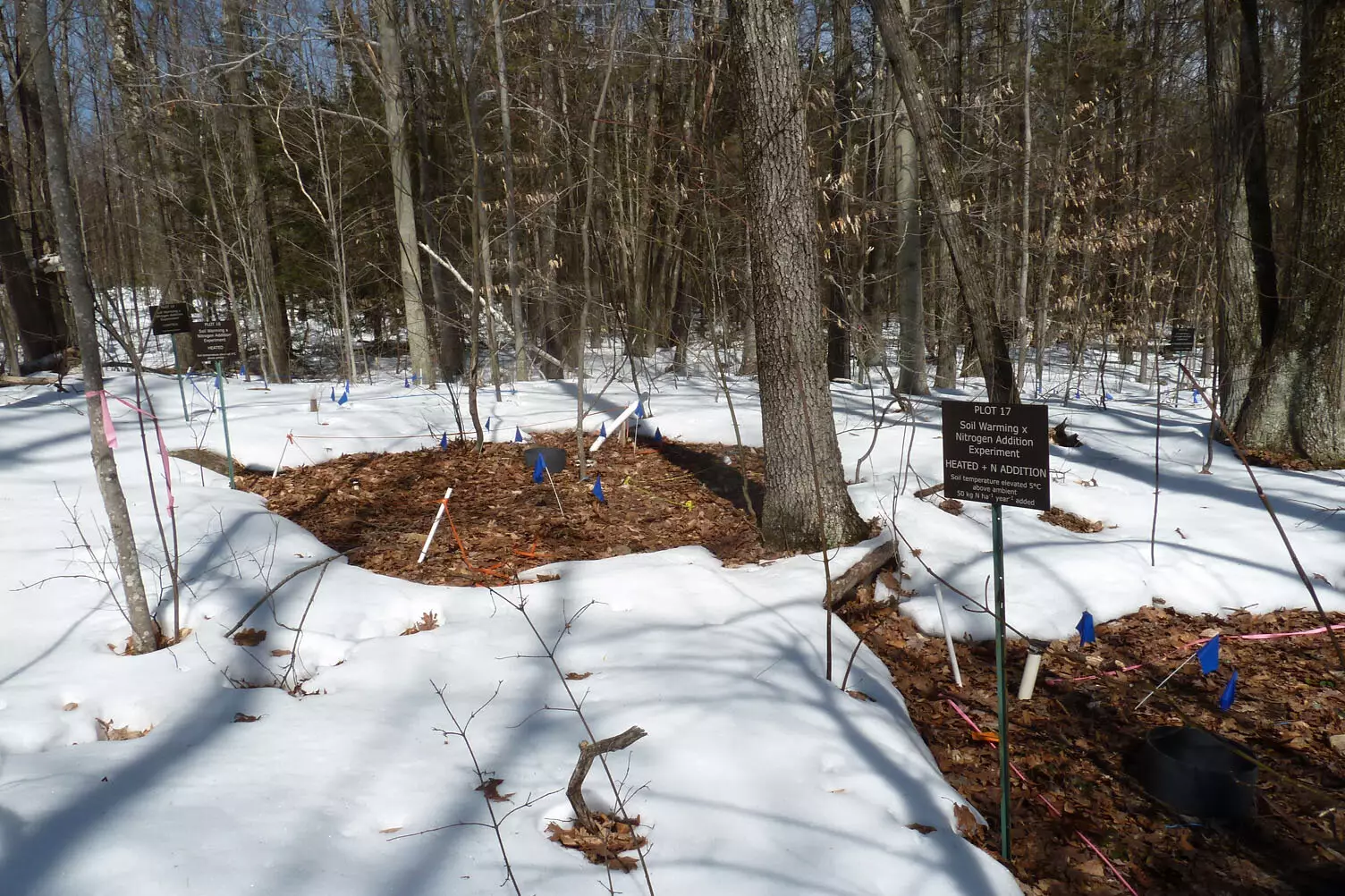New England’s forests, characterized by their rich biodiversity and important ecological functions, are facing unprecedented environmental challenges. Among the primary concerns are the effects of climate change, marked by rising temperatures, and increased nitrogen deposition resulting from human activities, particularly the burning of fossil fuels. The interplay between these two global change phenomena has been the subject of extensive research; however, a pioneering study from the University of New Hampshire (UNH) has merged these variables in an innovative way to understand their combined impact on forest ecosystems.
Traditionally, studies have approached the effects of climate change and nitrogen levels in isolation. The UNH research is noteworthy as it combines these variables for the first time in a long-term experimental setup. Melissa Knorr, a lab research supervisor at UNH, emphasizes the significance of this approach, especially in the Northeast, which has seen historical increases in nitrogen deposition and an accelerated rate of warming compared to other U.S. regions.
Conducted over a 16-year period at the Harvard Forest Long-Term Ecological Research site in Massachusetts, the study employed rigorous experimental conditions where soil was subjected to a controlled increase in temperature of 5°C and a steady nitrogen fertilization regimen. This empirical framework allowed researchers to gather reliable data on how these changes influenced carbon storage in forest soils.
The results of this study challenge prevailing assumptions in the scientific community regarding soil carbon loss under climate change. Previous research indicated that warming alone was a significant driver of carbon loss in forest ecosystems. However, the UNH study revealed that increased nitrogen levels and higher temperatures could actually stabilize soil carbon storage due to enhanced belowground plant activity. Notably, the natural processes of root turnover, where plant roots grow, die, and decompose, contribute to this dynamic by introducing new carbon into the soil.
Professor Serita Frey’s insights underline that plant growth and health are crucial in maintaining soil carbon levels. She highlights that while microbial activity tends to break down organic carbon, the robust input from plant roots can counterbalance significant carbon losses that otherwise would result from rising temperatures. This finding is critical, as it provides a more nuanced understanding of the relationships between plant life and soil carbon dynamics.
While efforts to reduce nitrogen emissions have shown some positive outcomes, nitrogen levels in New England are still substantially elevated compared to pre-industrial times—five to six times higher, according to the data. These excess nitrogen inputs can have deleterious effects on forest ecosystems, including damage to plant health and the acidification of nearby waterways. The current findings from UNH stress the importance of addressing nitrogen levels not only from a pollution standpoint but also as a fundamental factor in maintaining forest health and their capacity to act as carbon sinks.
The implications of this research are considerable, especially in the context of conservation and forest management strategies. Understanding that interactions between plant activity and soil carbon storage could mitigate the expected impacts of climate change enables better-informed approaches to preserve and manage forest ecosystems. It highlights the crucial need to focus on plant-soil interactions and adaptive strategies that can enhance carbon sequestration.
Knorr notes that these findings challenge previous predictions that analyzed single environmental factors in isolation. By synthesizing various stressors, the study presents a more comprehensive picture of how ecosystems could be managed to combat the effects of climate change effectively. For policymakers and conservationists, this research provides critical insights to preserve the environmental integrity of New England’s forests.
As global climate challenges continue to evolve, studies such as these will be essential in shaping the ways we understand and engage with our natural environments. The interactions highlighted in this research may lead to innovative strategies and policies that focus on sustainability, resilience, and the promotion of healthy ecosystems that can thrive even amid rising temperatures and increased nitrogen deposition. The legacy of this research lies in its potential to guide future scientific inquiry and environmental stewardship in a rapidly changing world.


Leave a Reply